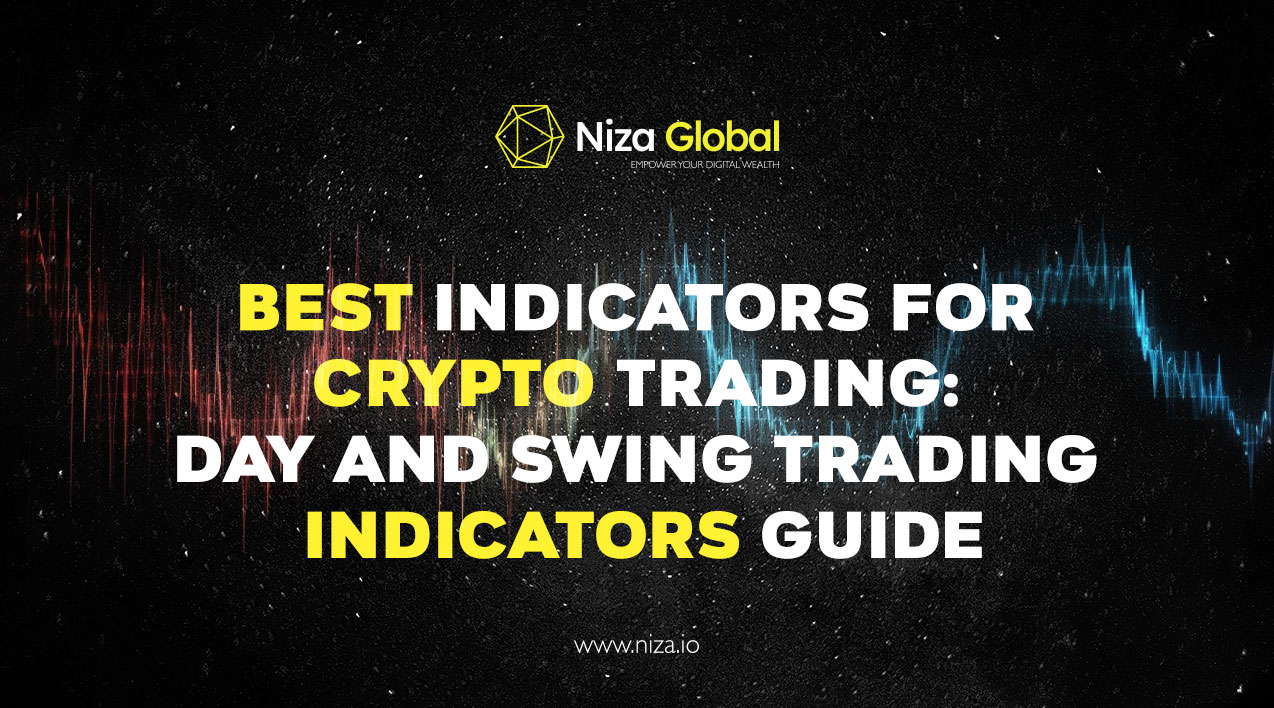Introduction
The cryptocurrency market is known for its volatility, offering both risks and opportunities for traders. To navigate this dynamic environment effectively, having the right tools is essential. This guide explores the 13 best indicators for crypto trading, tailored for both day and swing traders. By mastering these indicators, you can minimize losses and enhance your chances of making profitable trades.
The choice of indicators depends on your trading style. Day traders benefit from fast-reacting indicators, while swing traders prefer slower, trend-focused tools. Combining multiple indicators creates a robust trading system—a critical component for any successful trader.
This article will outline the top indicators, their variations, and how to integrate them into a trading strategy to optimize your cryptocurrency trading experience.
What Are Trading Indicators?
Trading indicators are analytical tools that use mathematical computations and chart patterns to help traders identify potential trading opportunities in the cryptocurrency market. By analyzing price and volume data, these indicators provide insights into market trends, momentum, and potential price reversals, enabling informed trading decisions.
Indicators use algorithms to evaluate market data and generate signals, such as identifying trends, forecasting price reversals, and determining entry and exit points. Traders often combine multiple indicators for a more comprehensive understanding of market conditions.
Types of Crypto Trading Indicators
Traders typically rely on various types of indicators:
- Trend Indicators: Identify the direction of market trends. Examples include the Ichimoku Cloud, Moving Averages, and trendlines.
- Momentum Indicators: Measure the strength of market movements and detect potential reversals. Common tools are the Relative Strength Index (RSI), Stochastic Oscillator (SO), and Moving Average Convergence Divergence (MACD).
- Volatility Indicators: Assess market volatility levels. Bollinger Bands (BB) are a popular choice.
- Volume Indicators: Analyze trading volume to gauge market activity. On-Balance Volume (OBV) is an example.
- Oscillators: Swing between two extreme values to predict market swings. The Average Directional Index (ADX) is a notable oscillator.
Moving Averages (MA) Indicator Overview
The Moving Average (MA) is a foundational indicator for analyzing market trends. It calculates the average price of an asset over a specific period, helping traders identify market direction and sentiment. Moving averages are dynamic and adapt to price changes, making them essential for spotting established trends.
While MAs don’t excel at identifying new trends, they confirm existing ones. The type of moving average to use depends on your trading timeframe. Short-term traders may use faster-moving averages like the MA 9, while swing traders often rely on slower-moving averages like the MA 200.
How to Use the Moving Averages Indicator
Moving averages are primarily used to confirm trends. When the price of a cryptocurrency is above the moving average, it signals a buying opportunity. Conversely, when the price is below the moving average, it indicates a selling opportunity.
Moving averages can also act as support during uptrends and resistance during downtrends. Points where the price interacts with the moving average often serve as strategic entry or exit points.
Main Types of Moving Averages
1. Simple Moving Average (SMA)
The SMA calculates the average closing prices over a specific period. For instance, on a 4-hour chart, summing the closing prices of the last 20 candles and dividing by 20 gives the SMA. It’s widely used for determining overall market trends.
2. Smoothed Moving Average (SMMA)
The SMMA includes more historical data than the SMA, reducing market noise and filtering out short-term fluctuations. This makes it ideal for analyzing long-term trends.
3. Exponential Moving Average (EMA)
The EMA prioritizes recent data while incorporating historical data, making it highly responsive to price changes. This indicator is particularly useful for day traders needing quick decision-making tools.
4. Weighted Moving Average (WMA)
The WMA assigns greater weight to recent data, progressively decreasing the importance of older data. This makes it a suitable tool for short-term trading and precise entry points.
Simple vs. Exponential Moving Average (SMA vs. EMA)
The SMA and EMA are the most commonly used moving averages in cryptocurrency trading. The SMA provides a broader view of market sentiment, while the EMA offers a sharper focus on current momentum. Combining these two indicators helps traders gain a balanced perspective.
Additional tools, such as the moving average trendline and moving average ribbon, enhance these indicators. The trendline smooths out data fluctuations, revealing clear trends. The ribbon, a series of moving averages with varying lengths, highlights support and resistance zones.
Conclusion
Moving averages remain one of the most versatile and widely used indicators in crypto trading. By experimenting with different types of moving averages and their combinations, traders can develop strategies that adapt to market conditions and new cryptocurrencies. Mastering these tools is a vital step toward building a successful trading system.


